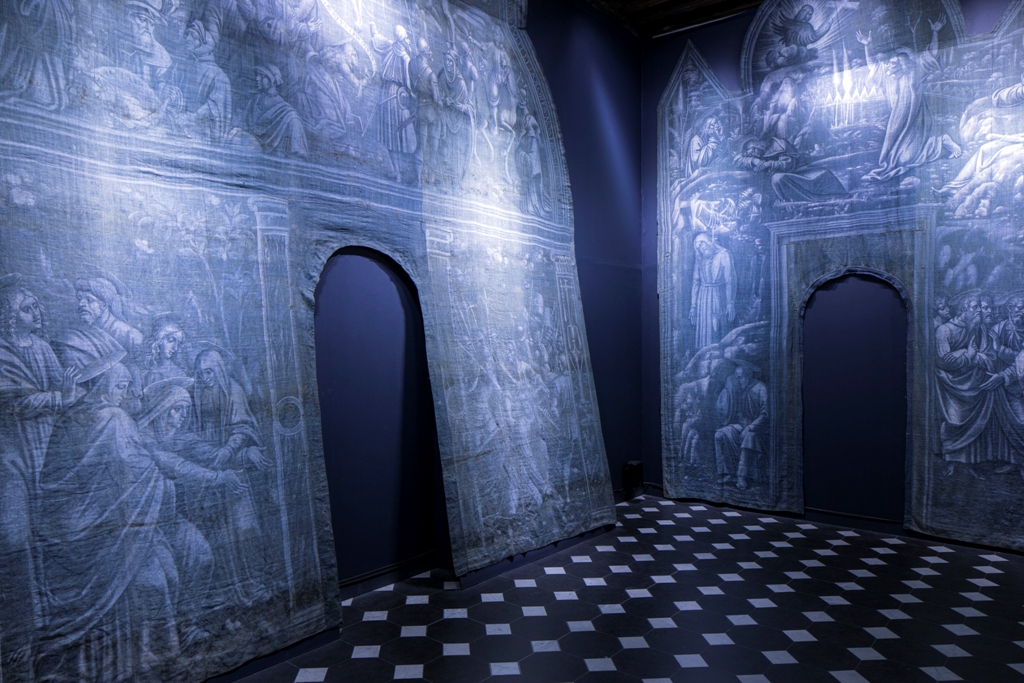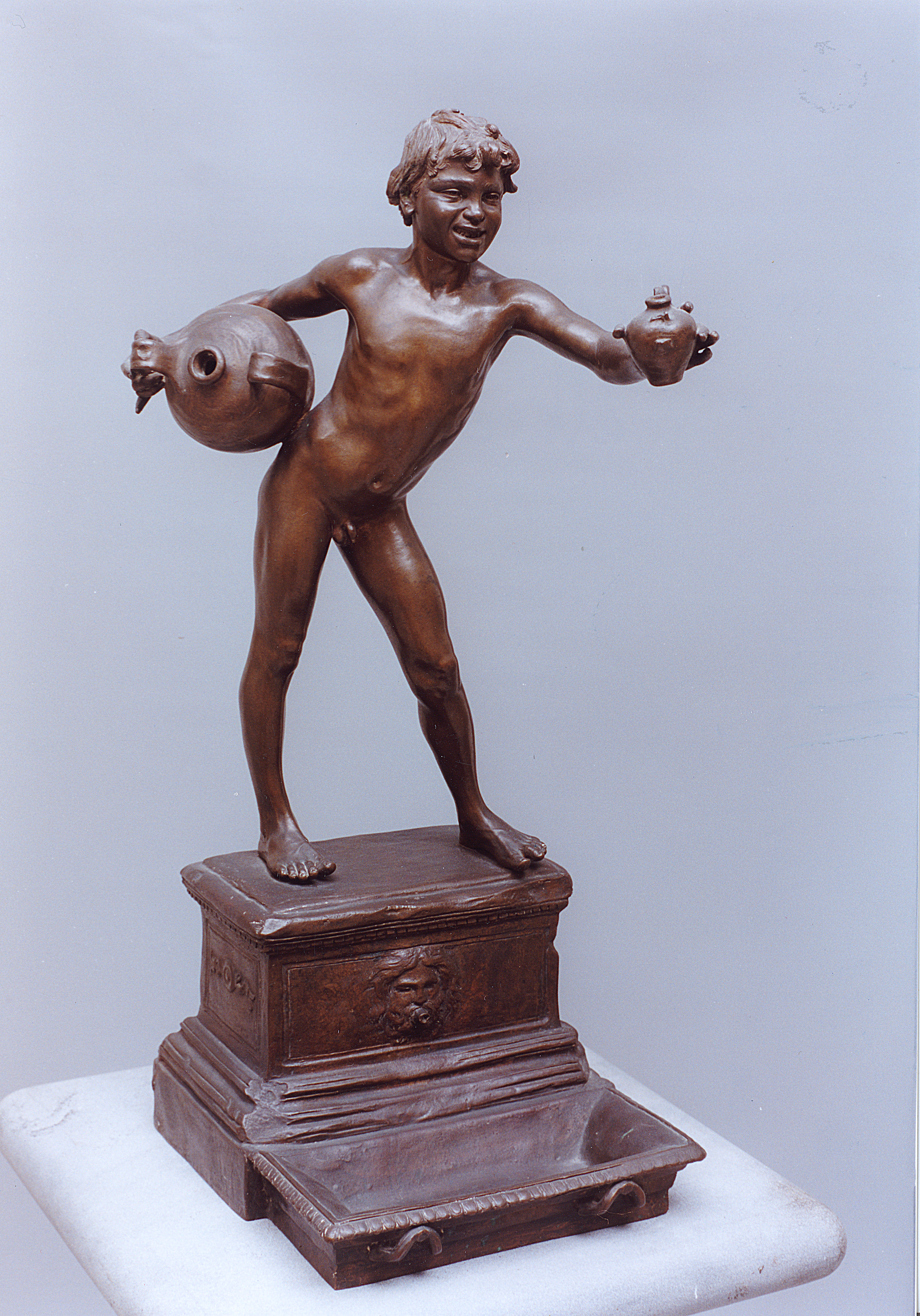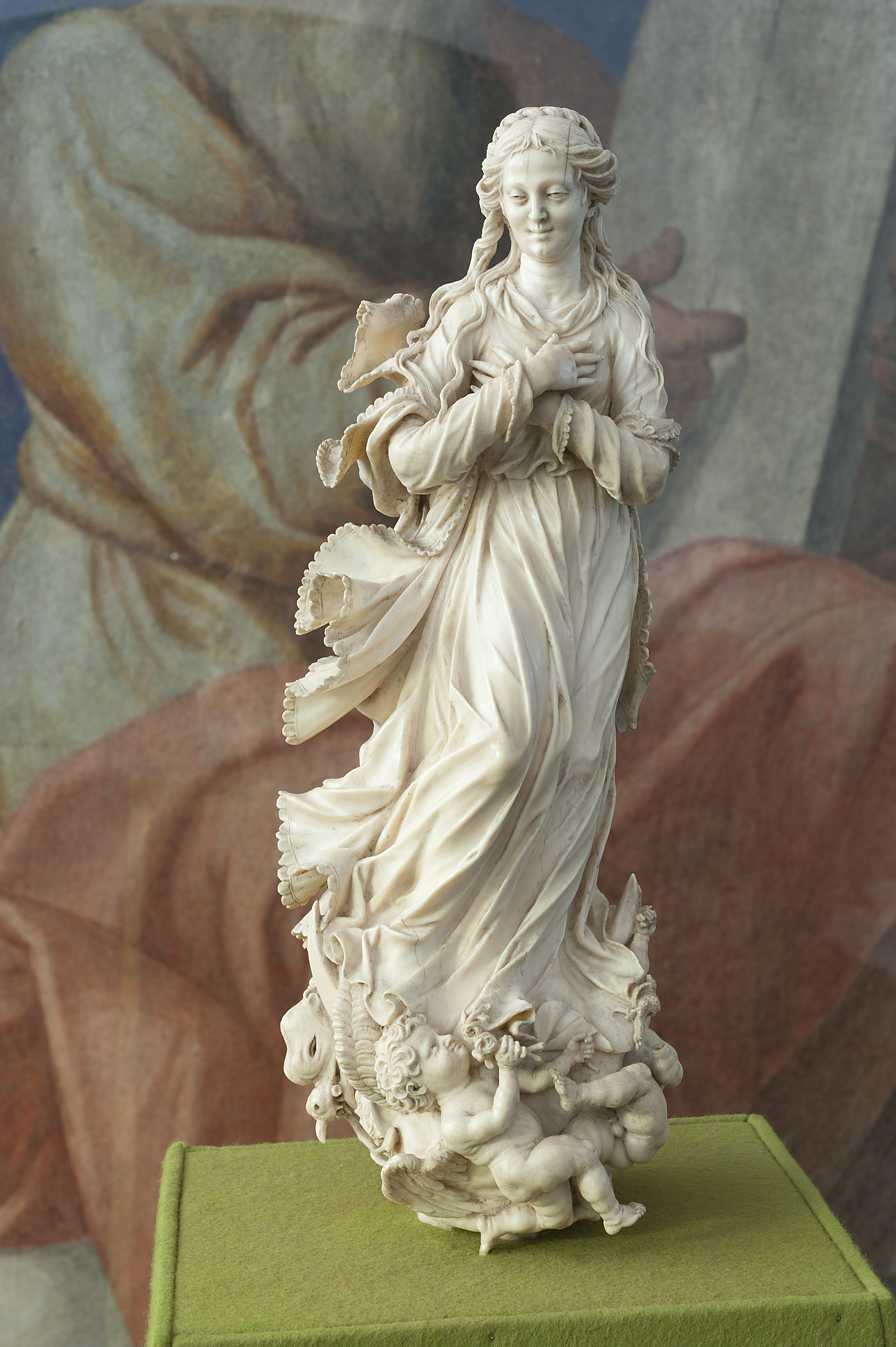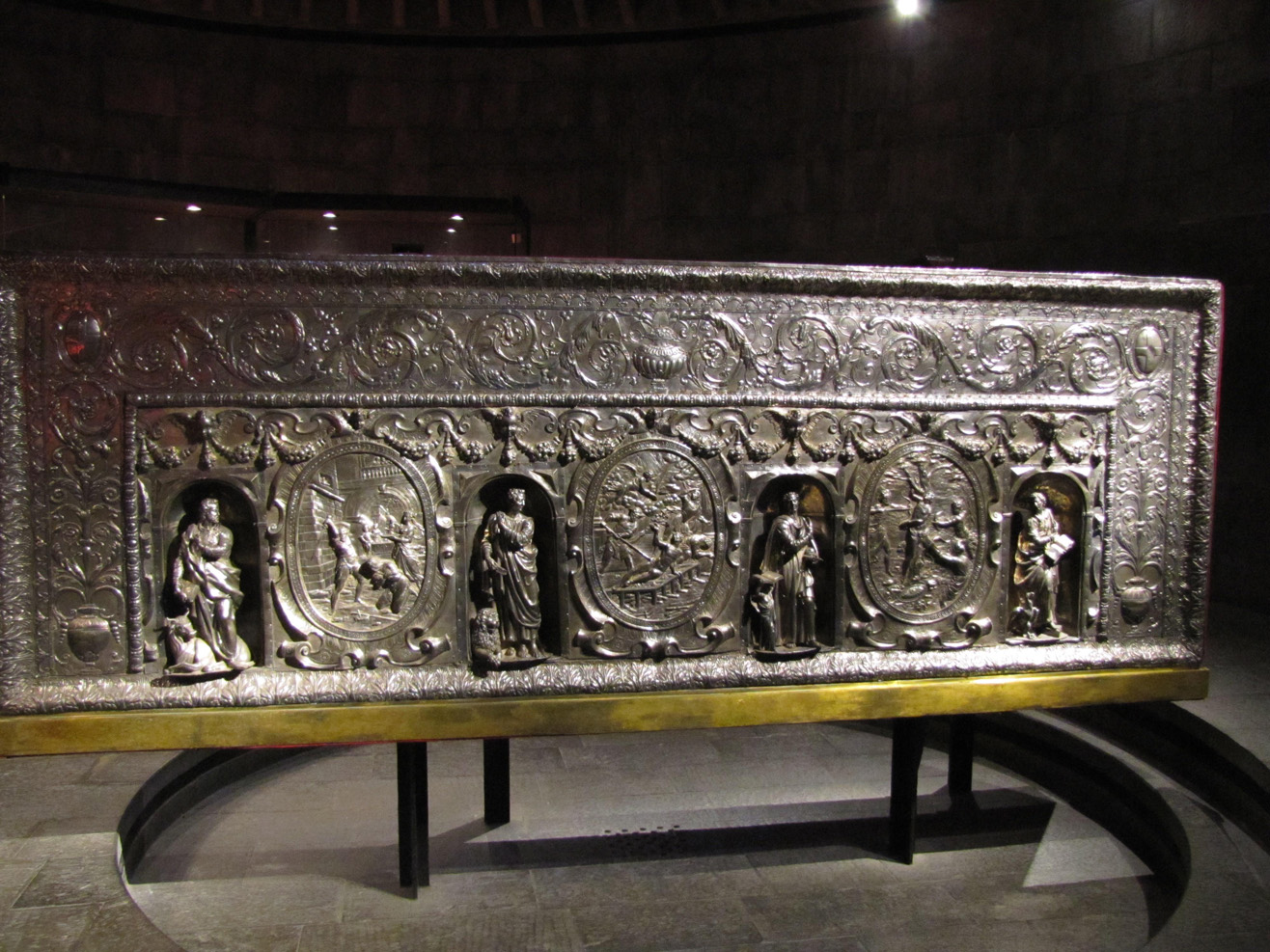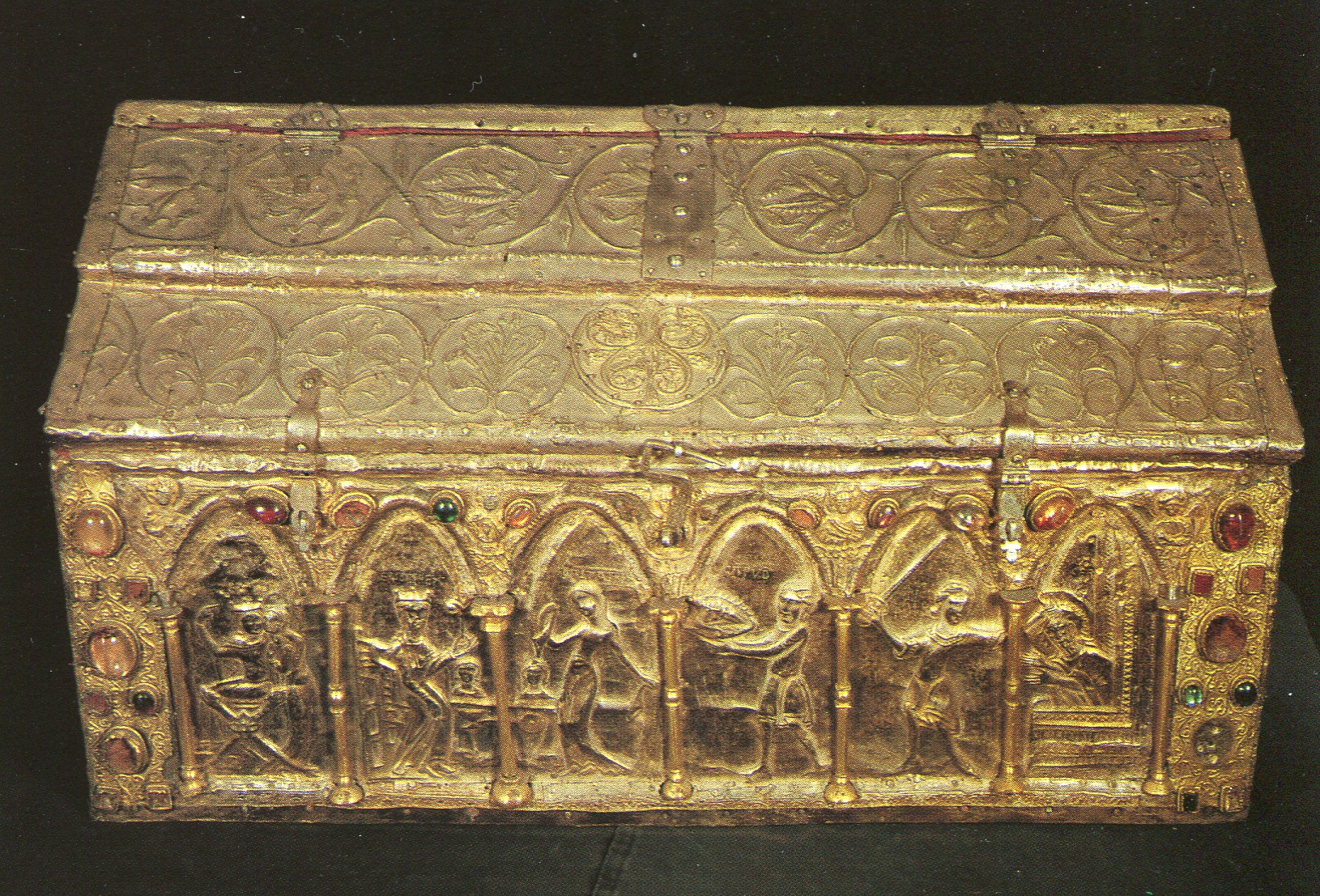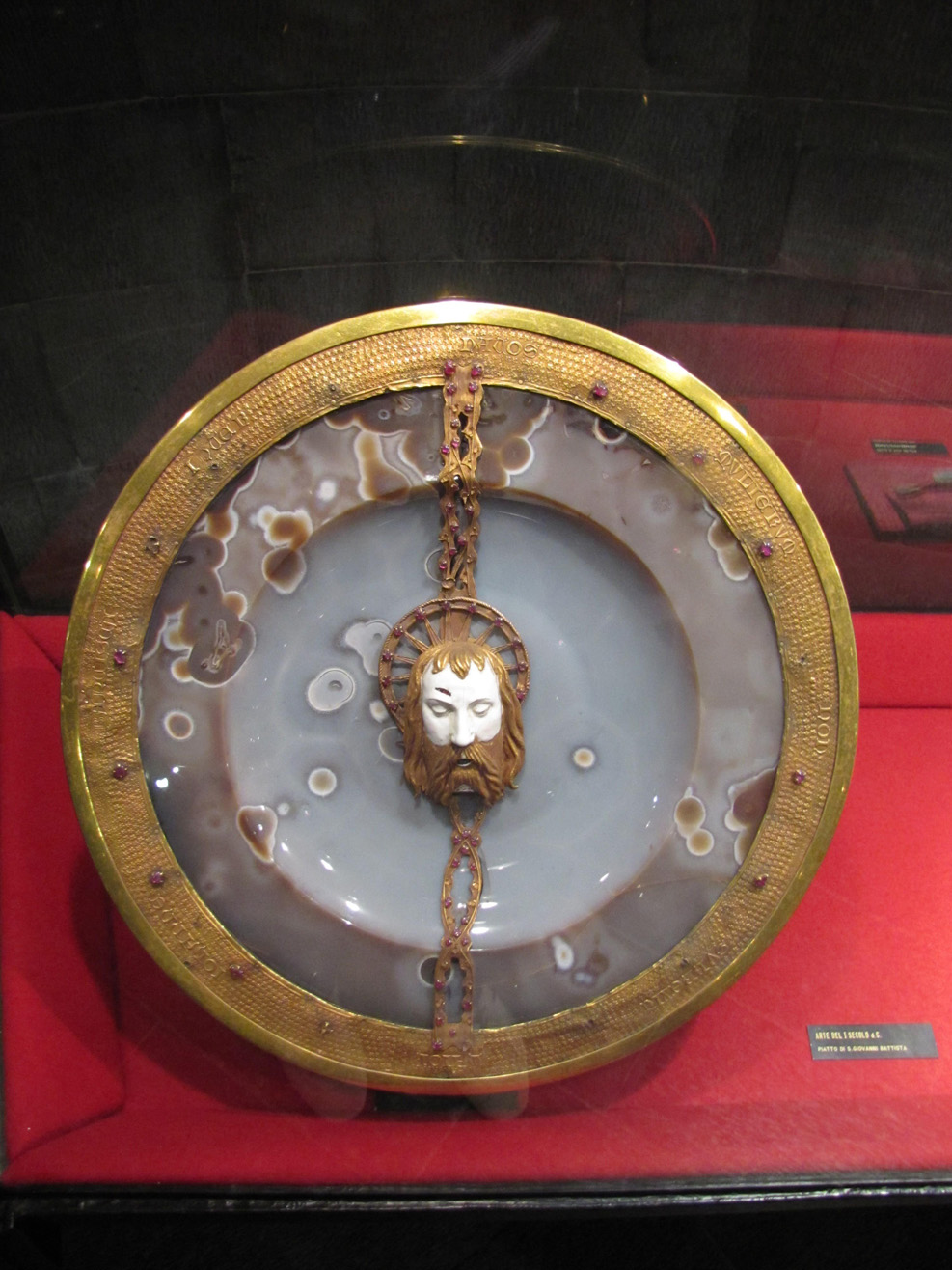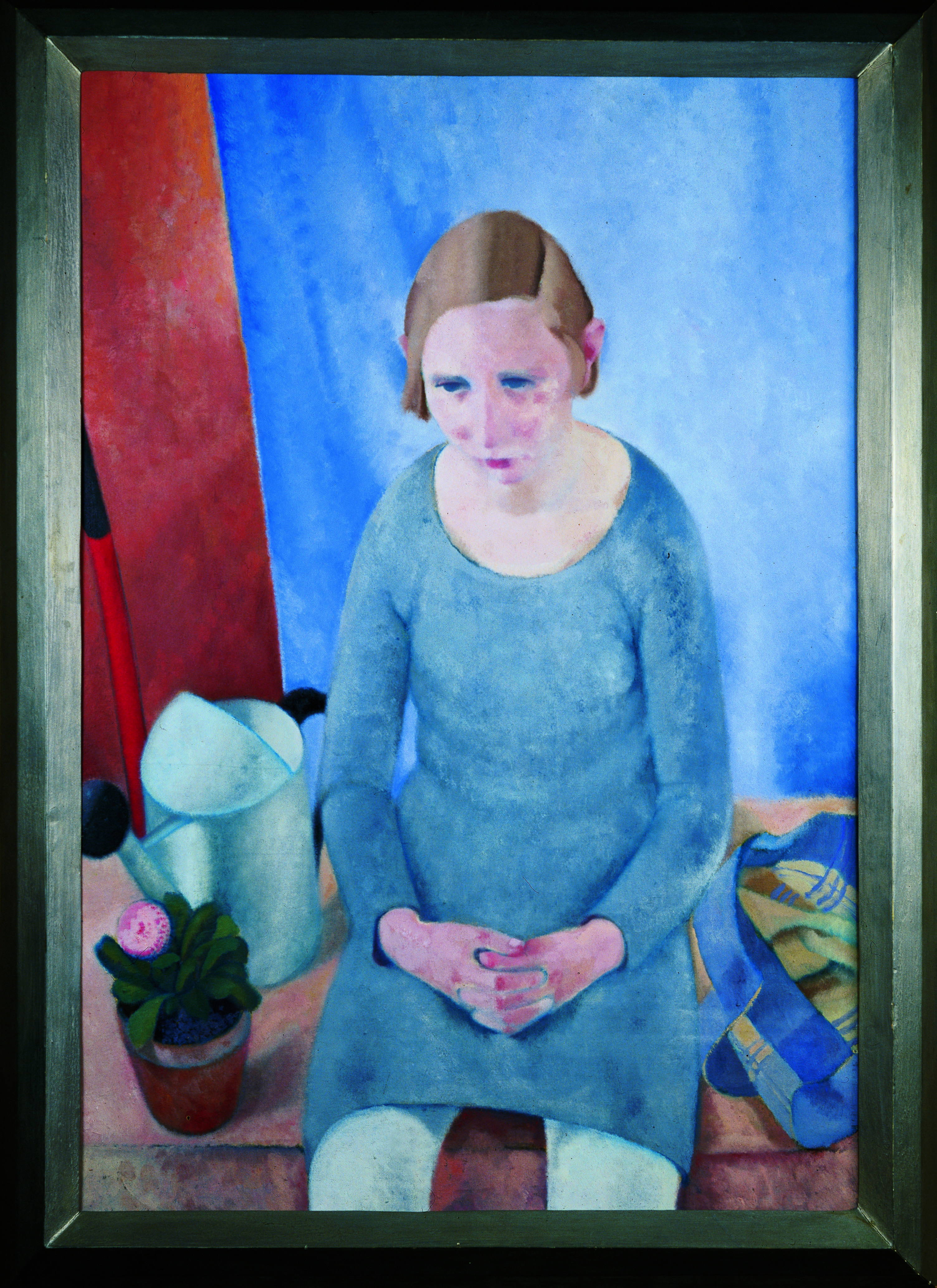
Click here to view image
Portrait of a young girl
XVII Biennale Internazionale di Venezia 1930 Venezia - acquisto
Casorati, Felice
painting
1930 - 1930 - XX
GAM0583
Unità di misura: cm; Altezza: 100; Larghezza: 69; Varie: Misure con cornice: cm 112 x 813
olio su tela incollata su tavola
The 'Portrait of a Girl' represents, to a high degree, that atmosphere of melancholy and suspension of time that characterises Casorati's art. The girl is portrayed from an elevated viewpoint and with a framing that cuts off the figure above the knees. She seems to stare at the void indifferent to what is happening around her with an absent expression, surrounded by everyday objects such as a small flowerpot, a watering can and, on the opposite side, a tea towel. The original grey frame echoes and amplifies the cold tones of the painting.
On the reverse side, evidently repudiated by the artist, are painted a female nude and two sketched figures, one of which is seen from behind, which are outlined against the background occupied by a page, in the unmistakable pink colour, of the sports newspaper "Gazzetta dello Sport". The portrait depicts a young woman sitting with her shoulders hunched and her hands clasped in her lap. A soft palette with pastel effects, playing on the contrasts between blue and pink, characterises the resigned figure of the girl and the everyday context in which she is immersed by the artist. The painting is done on canvas glued to cardboard, which forms the back of the work, also painted by the artist with two sketched figures, one of which is seen from behind, and a female nude outlined against the background occupied by a page, in the unmistakable pink colour, of the Gazzetta dello Sport newspaper.

